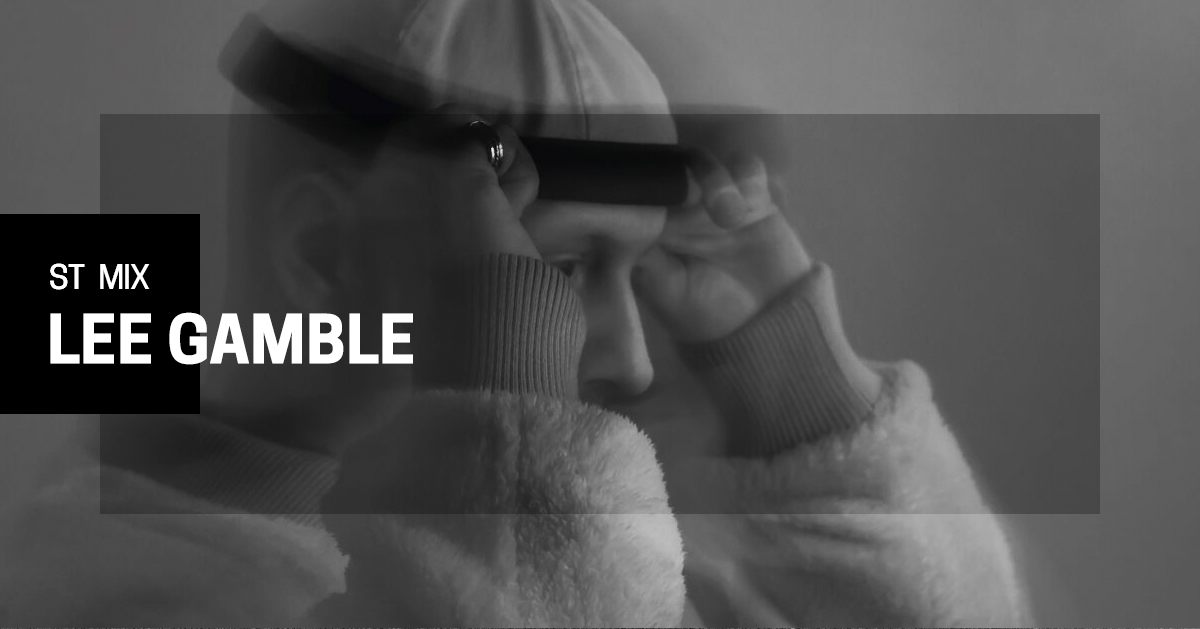
Photo from artist's personal archive.
Lee Gamble presents a deeply conceptual mix, made using field recordings, academic pieces, and outtakes from discussions and lectures. [social_warfare]
The author of the mix is Lee Gamble, a British musician, composer, producer and prolific DJ. Lee began his career by spinning vinyls on pirate radio and at events when the jungle scene was emerging in the 1990s. He is a founding member of the multidisciplinary CYRK collective, has produced and curated three radio series for London-based Resonance104.4FM radio station, and is currently running a long-standing monthly show on NTS Radio. Since 2015, he has been the owner of his own brilliant UIQ label.Gamble began releasing music in 2006 with his first record on Entr'acte. However, an essential turning point in his career came after his two critically-acclaimed albums Diversions 1994-1996 and Dutch Tvashar Plumes on Bill Kouligas’ phenomenally expanding PAN Records. His latest album, Mnestic Pressure on Hyperdub, continues his experimental sonic forays into deconstructed fragments of early electronic dance music (related to jungle and techno) and thoughtfully formed layers of nostalgic, rich ambiance. The sense of novelty and originality in all his pieces is always accompanied by sublime micro-convulsions and skillfully-polished sound patterns. Throughout the latter decade, Gamble has collaborated with visual artist Bryan Lewis Saunders, musicians John Wall, Mount Kimbie, Cosmin TRG, Yutaka Makino, Special Request, and more.
Following his previous recordings for FACT, self-titled and Boiler Room, Lee Gamble presents Secret Thirteen Mix 097, which he titles Your Sociometric Afterlife (Hyperrealist Absurdist Psychodrama written for radio). This is a complex and conceptual audio collage of precisely-cut rare sound motifs, field recordings and academic pieces. Everything is rearranged and melted together to form a new sustained composition. The development of the recording is diligent and emotionally progressive - akin to refined literary narratives. Effective experimentations with colossal formless structures, static signals, voices, diverse samples, and computer modulations generate a multi-layered flexible wholeness.
The mix is reminiscent of Tony Delap’s abstract Portrait of Queen Zozer II painting, where meticulously-crafted shifting forms create a strangely stimulating sense of depth and isolation. Similarly to Delap’s willingness to continuously challenge the viewer's perception of reality, Gamble explores a variety of complicated musical themes in his recording. It’s one that certainly requires time, patience, and open-mindedness to absorb fully.
Lee Gamble on the mix:
“Your Sociometric Afterlife (Hyperrealist Absurdist Psychodrama written for radio)
The audio is constructed and composed around sampled discussions and lectures on the theory of 'The Biocentric Universe' and concept of 'The Resistance to Social Change' and acts out as a radio play for the notions of 'The Illusion of Death'/'This Dysfunctional Life/Afterlife'.
All frequencies are present, many are unavailable for perception.
The narrative is hidden as a 'sub-vocalisation' in the sub-harmonic content.”
Tracklisting
01. Inner loop
02. Part2_3_
03. Unchangeable pre-conditioned thief
04. The Tracer theory
05. Dissociatives on Barrow Island
06. Who are you?
07. Mirroring the fear of a former employee
08. Perhaps there are no objects?
09. Locked in
10. Your seraphic pseudocoma

11 Comments
amazing :)
Some more info from 'Your Sociometric Afterlife' (Part of the text/spoken element)
Atrophic governmental systems. Nihilist systems?
Programmed cell death (PCD) is explained as analogous to the characteristics of Imperialism and Capitalism.
__
Atrophic Factors
An atrophic factor is a force that causes a cell to die. Only natural
forces on the cell are considered to be atrophic factors, whereas, for
example, agents of mechanical or chemical abuse or lysis of the cell are
considered not to be atrophic factors. Common types of atrophic factors
are
Decreased workload
Loss of innervation
Diminished blood supply
Inadequate nutrition
Loss of endocrine stimulation
Senility
Compression
__
30:55, is that the pink courtesy phone? :-)
Pingback: Listen to Lee Gamble mix for Secret Thirteen | Dukla Prague Away Kit
Leshek
Thank you! This was the one thing I was wracking my brain to figure out where I'd heard it before. Still don't know but this helps. Such a great mix :)
Pingback: Secret Thirteen Mix 065 - Rrose | Secret Thirteen - Infinite Music and Art Journal
Pingback: Gábor Lázár - EP16 - The Death Of Rave | Secret Thirteen - Infinite Music and Art Journal
Such a great mix. Can't get enough of it.
Pingback: Xhin - Secret Thirteen Mix 072 | Secret Thirteen
Just dropping by to say that this Secret 13 mix of yours is absolute genius. Love it.